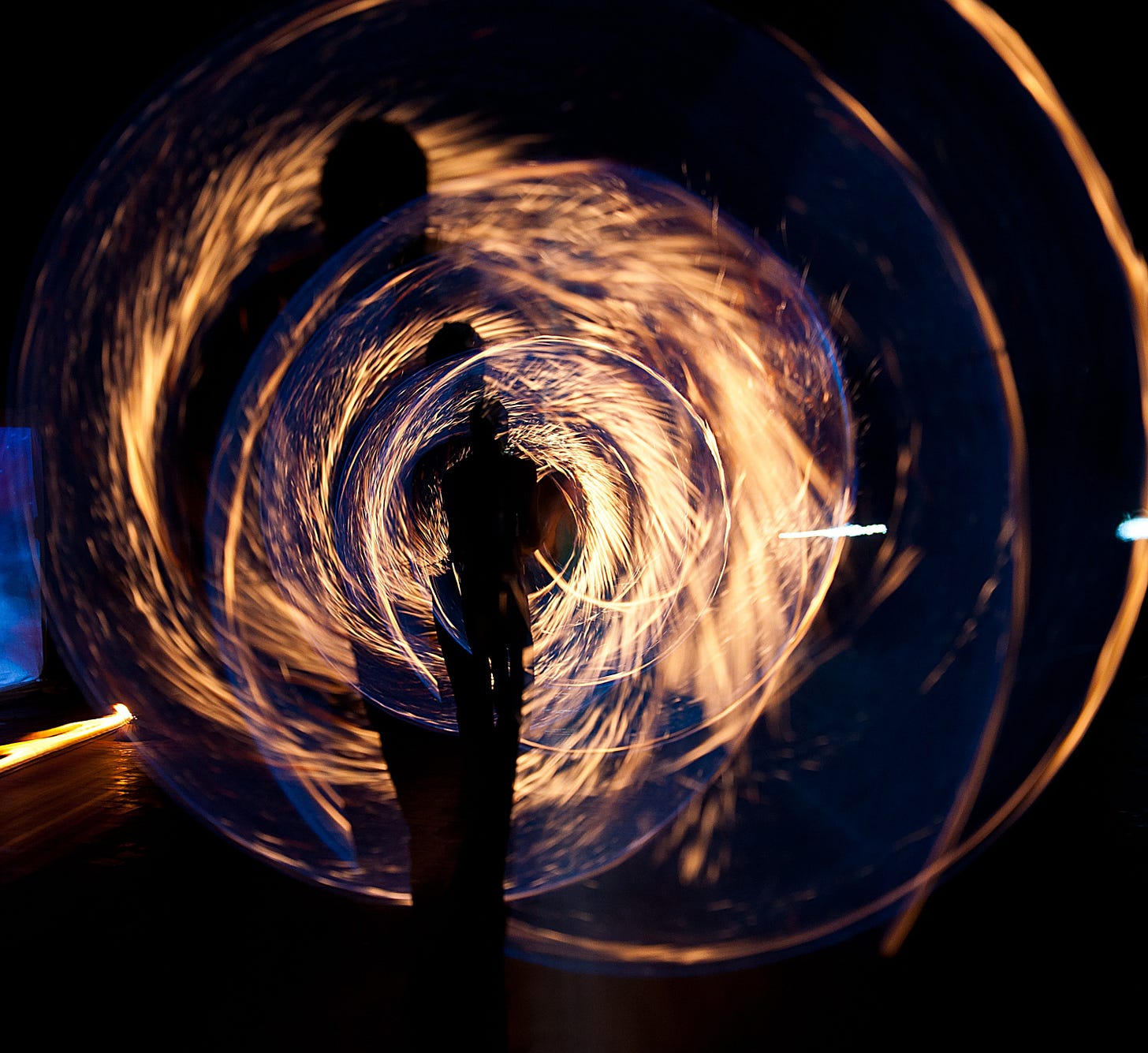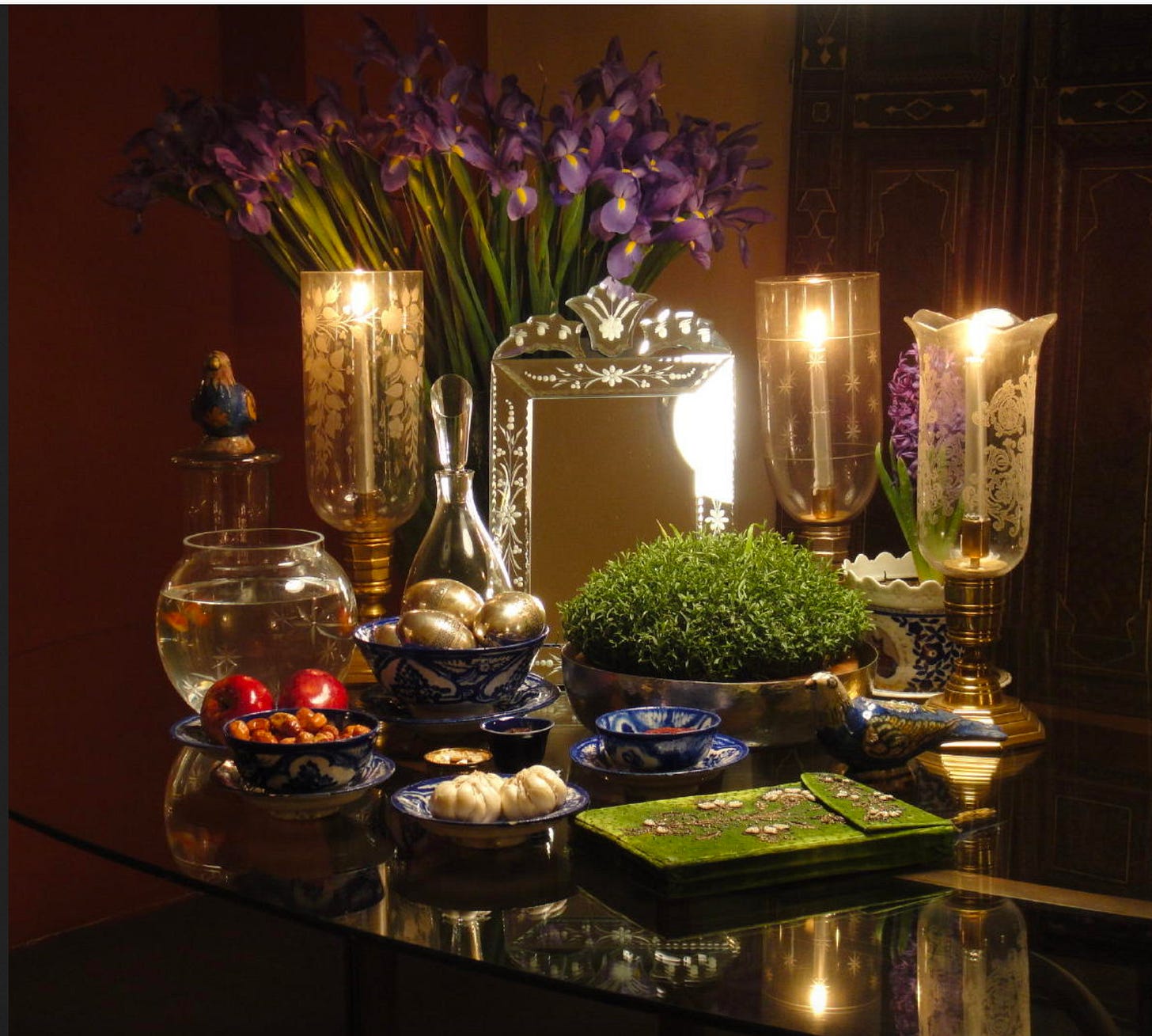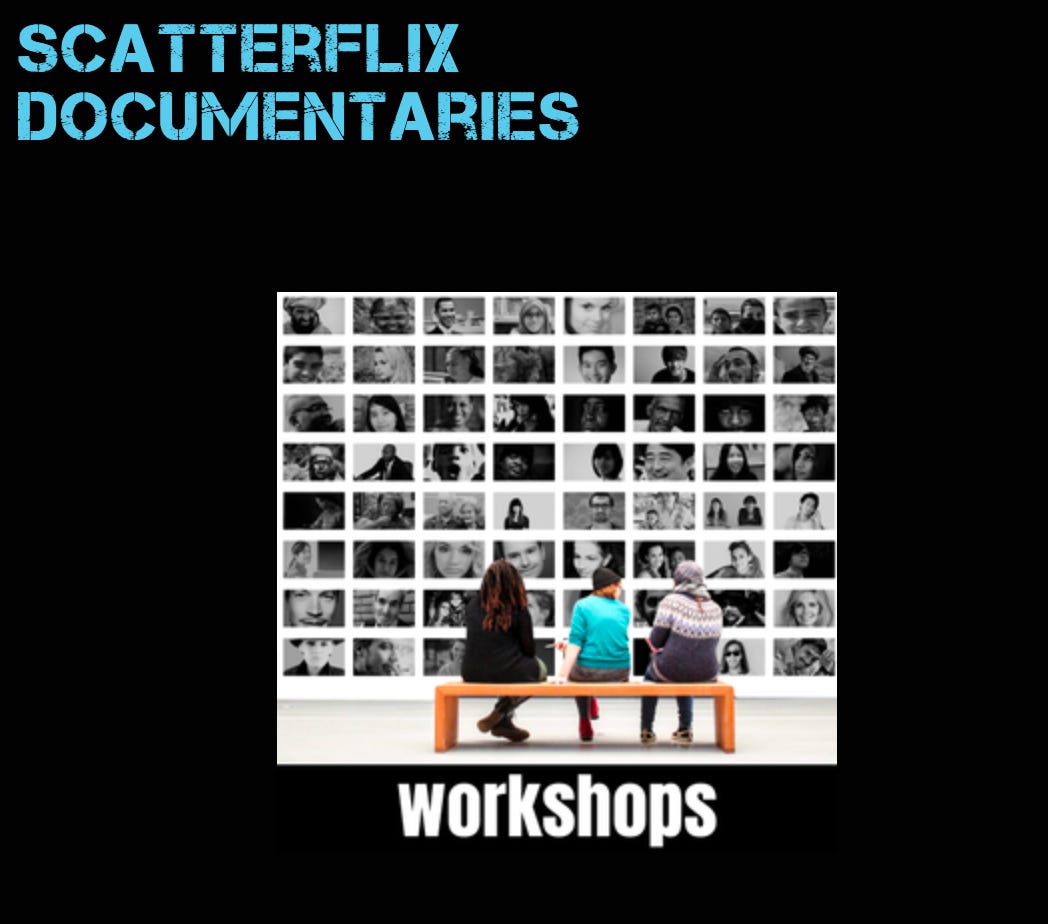Nowruz - نوروز - Iranian New Year
New beginnings for all of us, and for Sheila K who wanted to know!

(Aussi en français ci-dessous)
New year
21 March 2021, beautiful and peaceful Venus enters Aries along with the Sun, getting ready for a rebirth and renewal of the heart. All over Western and Central Asia people celebrate this coming burst of energy from the sun to celebrate the Spring Equinox; it is called Nowruz.
In Iran, this is the first day of Farvardin, corresponding with the astrological sign Aries. Like many celebrations there are themes of spiritual renewal, deep healing, and an evaluation of our past; saying goodbye to old wounds, turning away from what was and looking into the future. This is celebrated through fire, the symbol of energy and truth and purity, dating back to Zoroastrianism.
The week before the official new year, little fires are made in back streets and courtyards, and Chahar shanbe Suri - fire jumping - is performed by nightfall all throughout Iran and parts of Turkey, Azerbaijan, Tajikistan, Iraq and Afghanistan.
I once had the chance to experience Nowruz
when I lived in mountain cradled Hamadan with my daughter’s family. It was long ago now, however, what I remember is the sweet smell of rose jam being cooked by the neighbour, rushing around to buy new shoes to step into the new year with - I could not find any my size, so had to borrow from my brother-in-law - and picking up sticks from the park with the neighbourhood kids.
I thought of Janus the two-faced God as we jumped the fires, one looking to the past, the other to the future, and made silent wishes and promises…
After the fires, the next day began the mad whirlwind of cleaning the house, literally called - shaking the house.
My mother-in-law, Mama Roue, had us up ladders, in cupboards, clearing, washing, bringing out the rugs to the courtyard, while the house was metaphorically spanked, spick and span. This is part of the ritual of renewal, the same many of us do in the West when we bless, paint or wash the walls of a new house we move into.
My daughter, Alyosha, and her cousin Mohammed-Reza cut the entire bed of rose heads off to make the yard pretty and then they cut the tassels off the richly embroidered antique table cloth.
The week leading
up to new year was merry yet frenzied, with family ringing constantly, and friends dropping by with foodstuffs. Even though it was during one of the tougher times in Iran, where there was still food rationing and rebuilding, as the long Iran-Iraq war had taken its toll, one would never have known. The familiar sight of patrols on the streets seemed less.
Before the actual moment new year breaks, a table is set called - heft-seen - the Seven S’s. The table is laid with something beginning with S which is symbolic of rebirth. Often goldfish, coins, mirrors, painted eggs and other sweets are placed on or near the table. My daughter’s cousin Shabnam gave me a book of Hafez the illuminated Iranian poet. I treasure it.
Sabzeh - wheat or barley or lentils sprouts are grown in a dish
Samanu - wheat germ pudding
Senjed – a type of olive
Serkeh – vinegar
Seeb – apple
Seer – garlic
Somāq – sumac
I do not have a photo of our family’s table, but I do in my mind’s eye. In a whitewashed room piled with deep red rugs, one on top of another, with sunlight coming through the windows, the Alvand mountains in view, the table in the centre sparkled like a precious jewel. Mama Roue used to place it on the floor, the traditional Sofreh, cloth; the year we were there she used the table, maybe because Alyosha and Mohammed Reza were so naughty. And there it stayed during the entire 13 day holiday - intact, the little fish going round and round and round.
The first meal represents the theme of freshness and lots of fresh herbs and greens are eaten. I remember plate loads of Kuku Sabzi, a herb-type Tortilla, which is full of cilantro, parsley, dill, leeks, and fenugreek, all finely chopped, with dill kissed rice and fava beans - Baqala Polow - and white fish from the Caspian Sea. All this served with rosewater lemonade and Doogh, fermented yoghurt, water and mint, and ZamZam, Iranian-style cola.
And so days continued with visits and laughter and walking out to the mountains, ambling the streets, hanging out in the parks, and eating, sleeping and bantering the days away.
So to my Iranian family in Iran, and over the world, and friends, especially Mojo in Tehran and my beautiful Goddaughter, Isadora in Montreal, whose birthday falls today.
Happy Spring!
Thank you for passing by. Please share, send me a comment. And have a great new year.
Jeanne
If you are interested in film production workshops, you can visit my website @ Scatterflix for tips and info.
Dans toute l'Asie occidentale et centrale,
les gens célèbrent l'arrivée de l'énergie du soleil et du guerrier passionné Mars/Bélier pour fêter la nouvelle année - l'équinoxe de printemps. En Iran, c'est le premier jour de Farvardin, qui correspond au signe astrologique du Bélier, le jour officiel du printemps dans l'hémisphère nord.
Comme dans de nombreuses célébrations, on retrouve les thèmes du renouveau et de la guérison profonde, une évaluation du passé, en disant adieu aux vieilles blessures, en se détournant de ce qui était, et en regardant vers l'avenir. Tout cela est célébré par le feu, symbole d'énergie, de vérité et de pureté, qui remonte à l'ancienne religion du zoroastrisme.
La semaine précédant le nouvel an officiel, à la tombée de la nuit, de petits feux sont allumés dans les ruelles et le Chahar shanbe Suri - saut au-dessus du feu - est exécuté dans toute la région - Iran, Turquie, Azerbaïdjan, Tadjikistan, Irak et Afghanistan.
J'ai eu une fois la chance de vivre le Nowruz
lorsque je vivais à Hamadan avec la famille de ma fille. C'était il y a longtemps maintenant, mais je me souviens de la douce odeur de confiture de roses que préparait la voisine, la tentative d'acheter de nouvelles chaussures pour entrer dans la nouvelle année - je n'en trouvais pas à ma taille, j'ai donc dû emprunter celles de mon beaux-frère, de la cueillette de branches dans le parc pour le feu avec les enfants du quartier.
J'ai pensé à Janus, le Dieu aux deux visages, en sautant les feux, l'un regardant vers le passé, l'autre vers l'avenir, et en faisant des vœux et des promesses en silence.
Après les feux,
le jour suivant commence un tourbillon fou du nettoyage de la maison, littéralement appelé - secouer la maison.
Ma belle-mère - Mama Roue nous a fait grimper sur des échelles, dans des armoires, débarrasser, laver, sortir les tapis dans la cour - la maison était fessée et nettoyée - Métaphoriquement.
Cela fait partie du rituel de renouvellement, comme beaucoup d'entre nous le font en occident lorsque nous bénissons, peignons ou lavons les murs d'une nouvelle maison dans laquelle nous emménageons. Ma fille, Aliocha et son cousin Mohammed-Reza ont coupé les têtes de roses pour faire joli dans la cour, puis ont coupé les pompons de la nappe ancestrale et richement brodée.
Avant le moment précis de la nouvelle année,
une table est dressée, appelée - heft-seen -les sept "S". La table est recouverte des objets commençant pae S, symbole du renouveau. Souvent, des poissons rouges, des pièces de monnaie, des miroirs, des œufs peints et d'autres friandises sont placés sur la table ou à proximité. La cousine de ma fille, Shabnam, m'a donné un livre de Hafez, le poète iranien illuminé. Je le garde précieusement.
Sabzeh - germes de blé ou d'orge ou de lentilles cultivés dans un plat
Samanu - pudding au germe de blé
Senjed - une sorte d'olive
Serkeh - vinaigre
Seeb - pomme
Seer - ail
Somāq - sumac
Je n'ai pas de photo de notre table familiale,
mais je l’ai dans mon esprit. Dans une pièce blanchie à la chaux, empilée de tapis d'un rouge profond, les uns sur les autres, avec la lumière du soleil qui entrait par les fenêtres, les montagnes d'Alvand en vue, la table, au centre, brillait comme un bijou précieux.
Mama Roue avait l'habitude de le placer sur le traditionnel Sofreh en tissu, par terre ; l'année où nous étions là, elle a utilisé la table, peut-être parce qu'Aliocha et Mohammed Reza étaient si coquets. Et il est resté là pendant toute la durée des 13 jours de vacances - intact, ou le petit poisson tournant et tournant et tournant.
Et les journées se sont poursuivies avec des visites et des rires, des promenades dans les montagnes, dans les rues, dans les parcs, et des repas, du sommeil et des plaisanteries.
Alors, à ma famille iranienne, mes amis, en particulier Mojo à Téhéran et ma filleule, Isadora à Montréal, dont l'anniversaire tombe aujourd'hui.
Joyeux printemps.










It is so much fun, the fire jumping, the symbolic too. Thanks Yves
One thing I'd like to do among others in all this is Chahar shanbe Suri, jumping over fire like Janus from past to future, purified in the present moment.